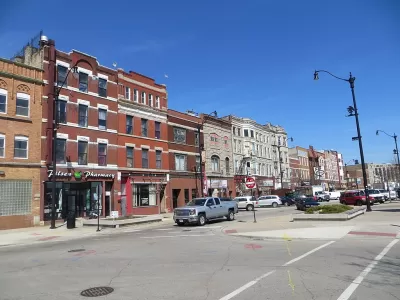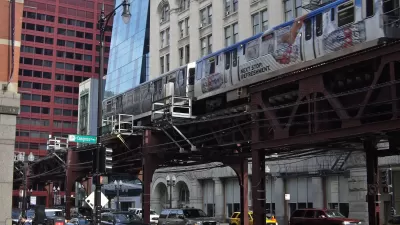Tax increment financing (TIF) districts are common in municipalities across the country. However, the economic development tool is also poorly understood and often the target of criticism.

Anthony Flint considers criticisms of tax increment financing (TIF) and proposals to reform it. In a designated TIF district, projected property tax revenue is calculated for the project as well as for surrounding properties, and those funds are sequestered. “The tax revenue can be used to fund public infrastructure, compensate private developers for their investments, or provide collateral for bonds,” says Flint.
Flint points to examples of TIF successes, but he says that numerous controversies continue to plague TIF projects. One of these issues is a lack of transparency, where TIF funds are sheltered from official oversight and the funds, say critics, are diverted to particular projects. Flint points to analysis by David Merriman, who suggests that states provide more stringent tracking and monitoring of TIF programs:
Model programs can be found in Wisconsin and Illinois, where state agencies track and report on total property tax revenues going to TIF districts, local governments are required to report detailed information related to revenues and their tax base, and nearly everything is published in online databases. All local governments would be well advised to provide extensive, easily accessible information about TIF use, revenues, and expenditures, [Merriman] says.
Merriman also suggests that counties, school districts, and other overlying local governments be allowed to opt out of contributing resources to TIF districts. In addition, he encourages states to review “but for” clauses. The clauses are used as proof that development would not occur without TIF funds, but they are open to varied and loose interpretations.
Abandoning TIF is one option cities have moving forward. But, says Flint, many are not choosing that path:
Instead, they are redesigning and reimagining it, adding provisions to ensure that equity is a consideration, and building in options that allow school districts to maintain access to revenue. Some jurisdictions have experimented with community improvement districts (CIDs) as a kind of hybrid or alternative framework that corrals both sales tax and property tax revenues for a given development project.
Cities are also bundling TIF in private-sector partnerships with finance tools like credit enhancements or stabilization funds. These arrangements have become so common, says Flint, that TIF on its own is referred to as “naked TIF.”
FULL STORY: The Hidden Costs of TIF

Maui's Vacation Rental Debate Turns Ugly
Verbal attacks, misinformation campaigns and fistfights plague a high-stakes debate to convert thousands of vacation rentals into long-term housing.

Planetizen Federal Action Tracker
A weekly monitor of how Trump’s orders and actions are impacting planners and planning in America.

San Francisco Suspends Traffic Calming Amidst Record Deaths
Citing “a challenging fiscal landscape,” the city will cease the program on the heels of 42 traffic deaths, including 24 pedestrians.

Adaptive Reuse Will Create Housing in a Suburban Texas Strip Mall
A developer is reimagining a strip mall property as a mixed-use complex with housing and retail.

Study: Anti-Homelessness Laws Don’t Work
Research shows that punitive measures that criminalized unhoused people don’t help reduce homelessness.

In U.S., Urban Gondolas Face Uphill Battle
Cities in Latin America and Europe have embraced aerial transitways — AKA gondolas — as sustainable, convenient urban transport, especially in tricky geographies. American cities have yet to catch up.
Urban Design for Planners 1: Software Tools
This six-course series explores essential urban design concepts using open source software and equips planners with the tools they need to participate fully in the urban design process.
Planning for Universal Design
Learn the tools for implementing Universal Design in planning regulations.
Heyer Gruel & Associates PA
JM Goldson LLC
Custer County Colorado
City of Camden Redevelopment Agency
City of Astoria
Transportation Research & Education Center (TREC) at Portland State University
Jefferson Parish Government
Camden Redevelopment Agency
City of Claremont





























